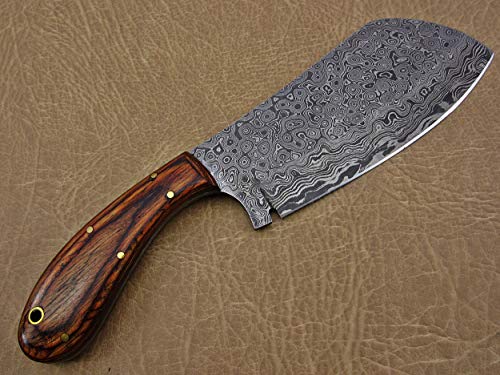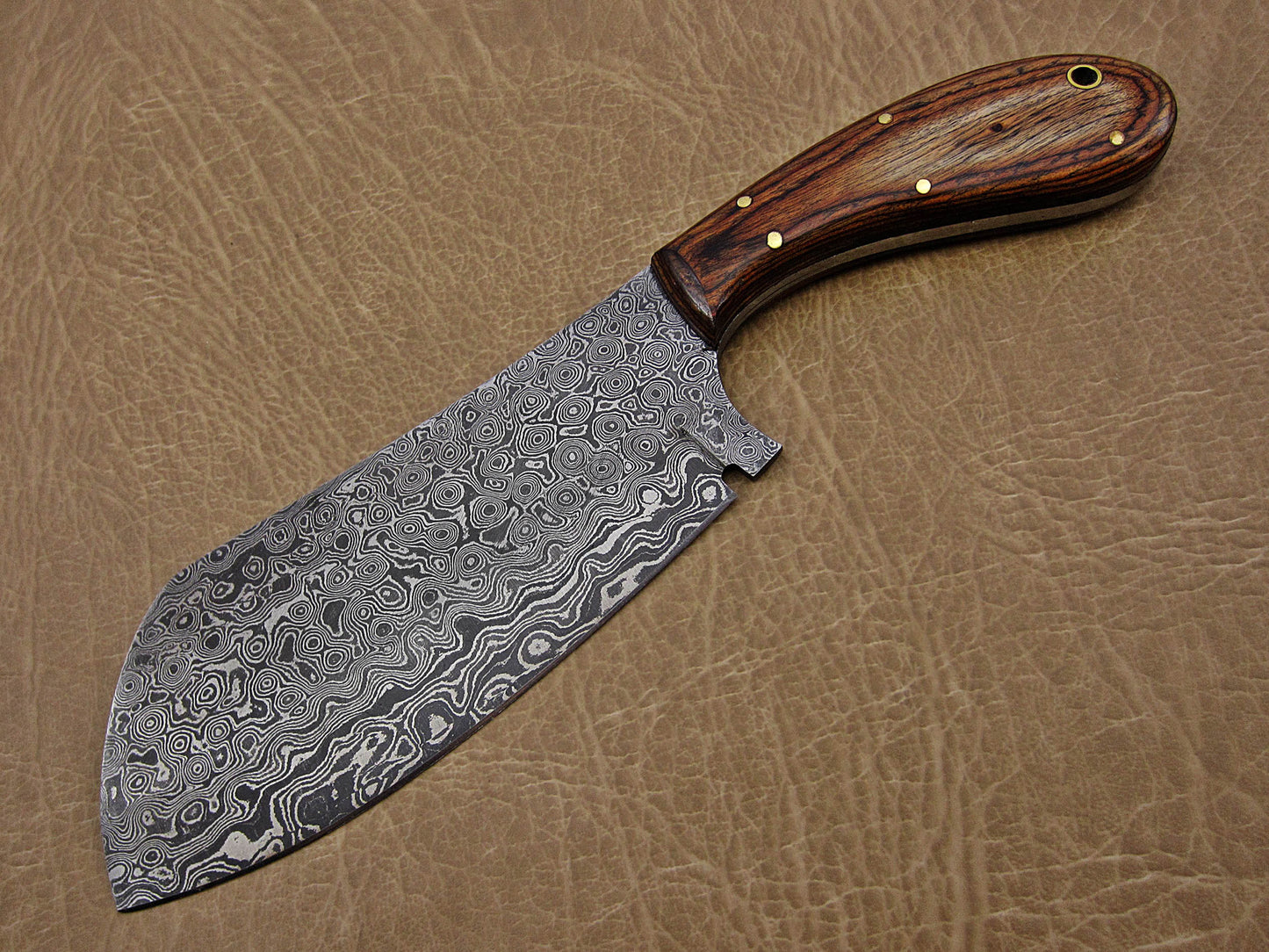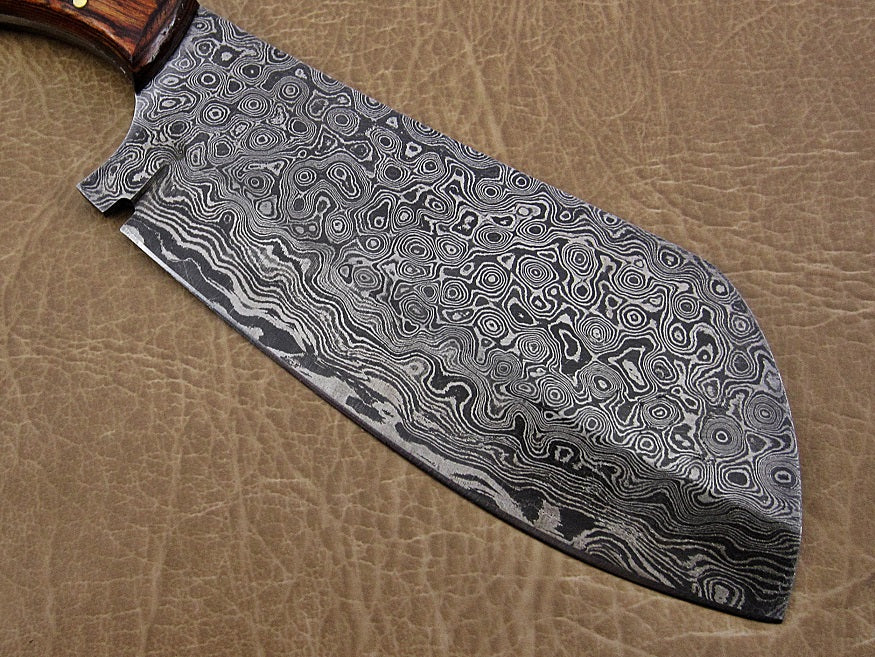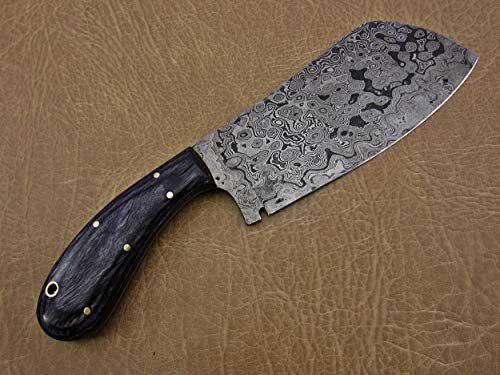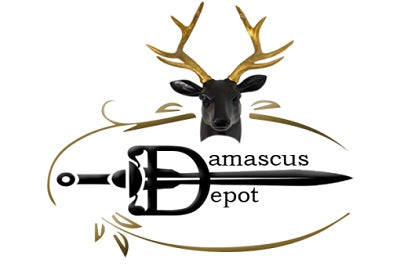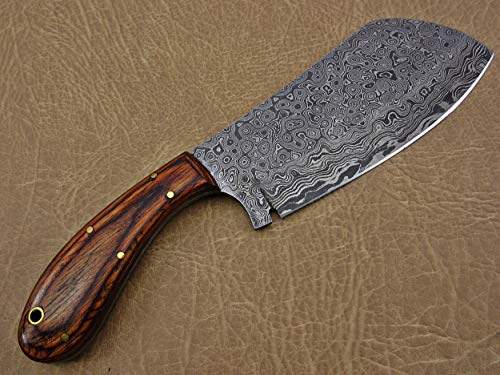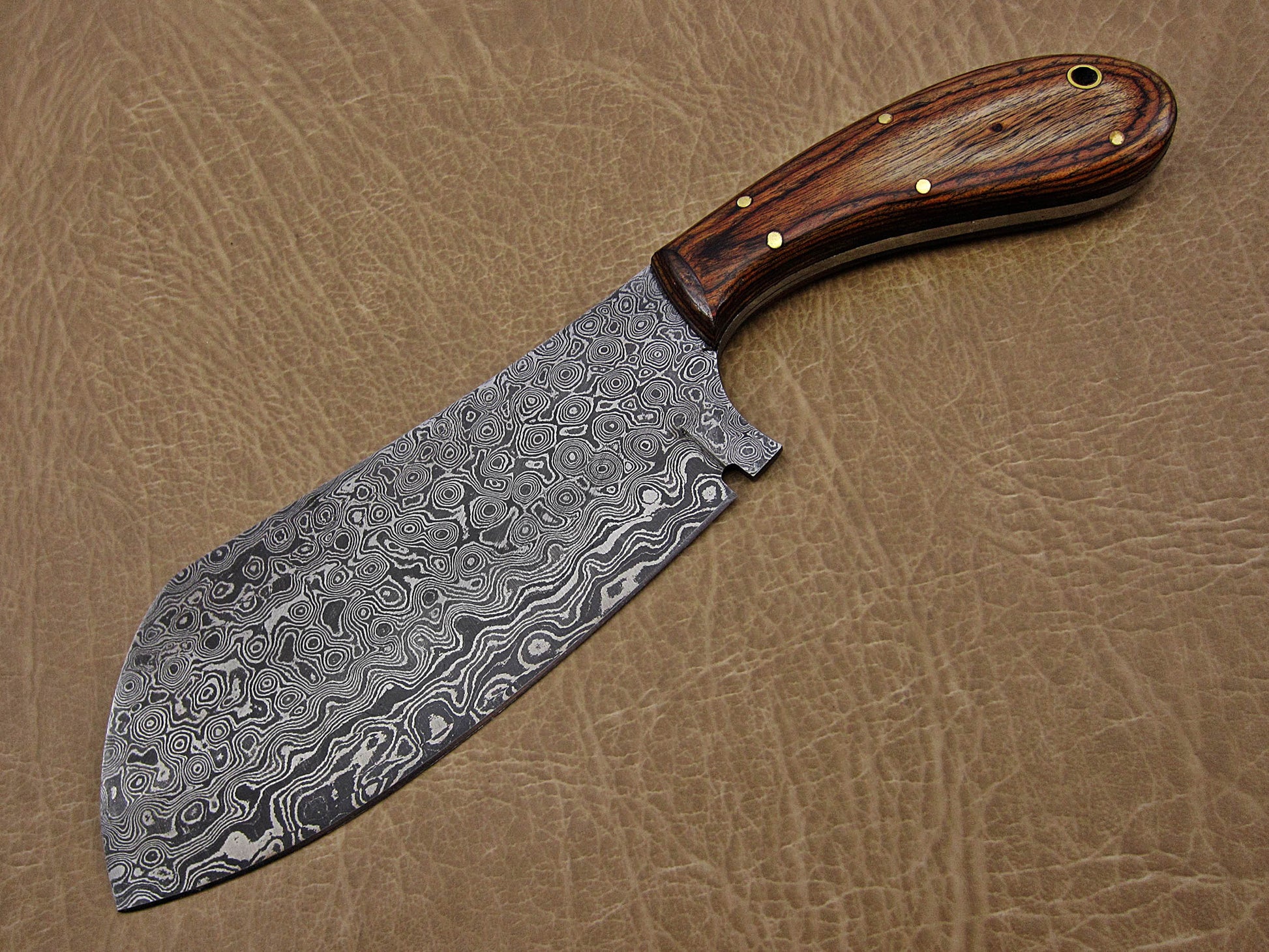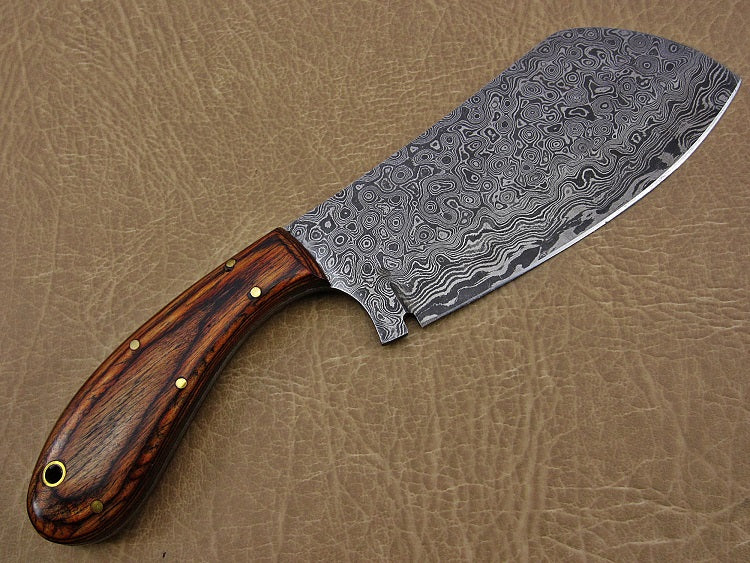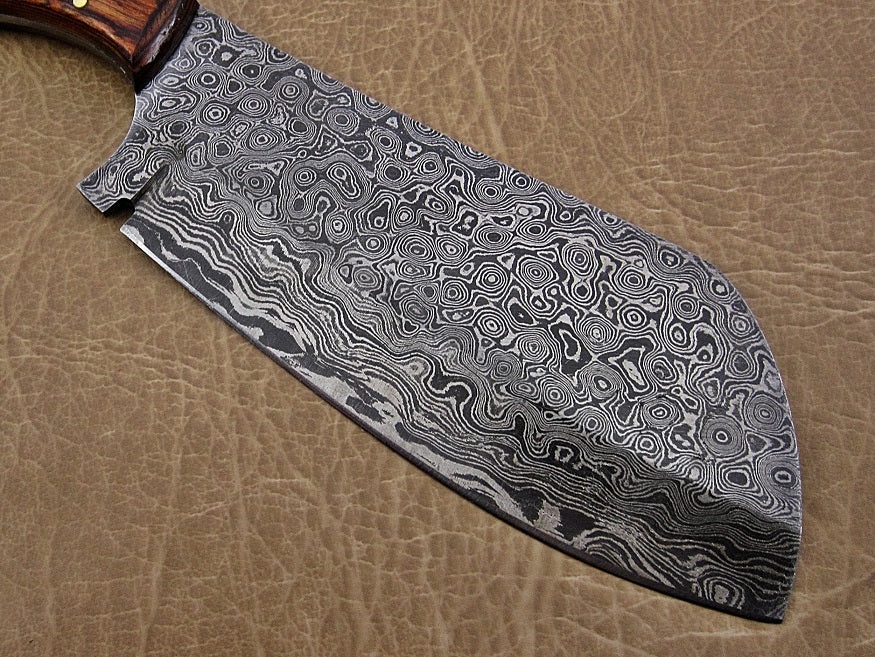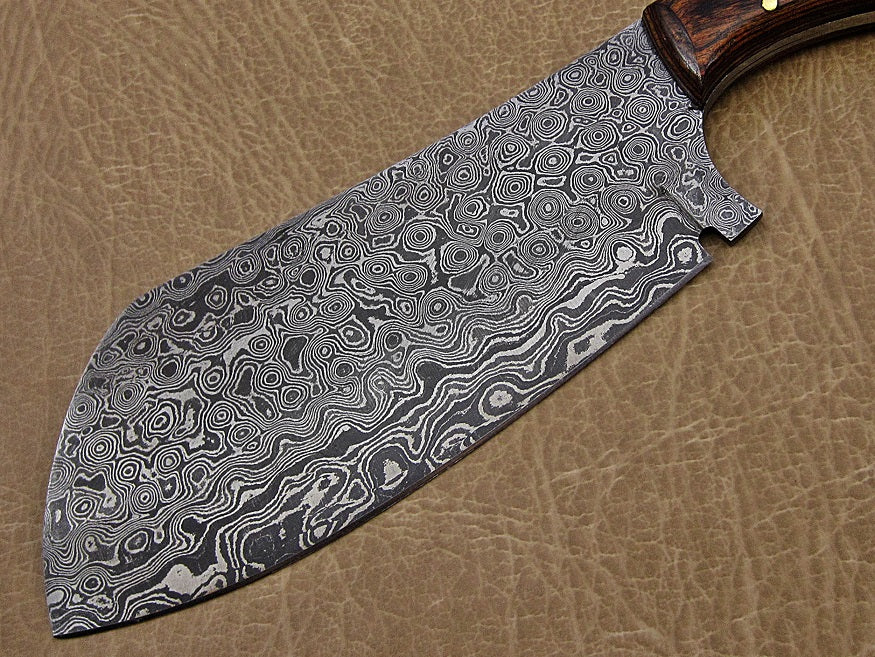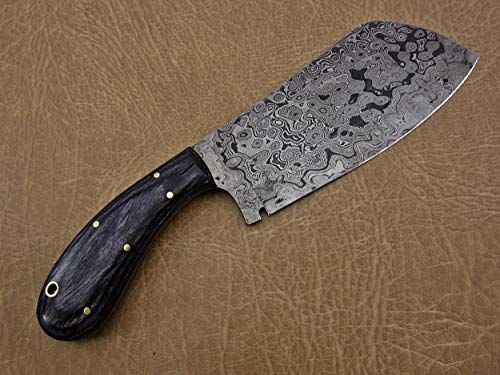Damascus Palace Inc
9.5" hand forged rain drop pattern Damascus steel Butcher knife, Meat cleaver, Walnut wood scale, Rain drop pattern Damascus Steel 3 mm blade
9.5" hand forged rain drop pattern Damascus steel Butcher knife, Meat cleaver, Walnut wood scale, Rain drop pattern Damascus Steel 3 mm blade
Couldn't load pickup availability
9.5" hand forged rain drop pattern Damascus steel Butcher knife, Meat cleaver, 2 tone brown wood scale, Rain drop pattern Damascus Steel 3 mm blade - steel Butcher knife
steel Butcher knife
Tips to Care Damascus knife:
Damascus steel (https://en.wikipedia.org/wiki/Damascus_steel) as well as 1095 high carbon steel knives are different than some other common steel knives because of its high carbon content they can be rusted if not care properly. If you have seen rust accidentally then use WD40 to remove it - steel Butcher knife
Never store your knife for long time in leather sheath. Leather can absorb water which will rust the knife. Always clean the blade after using and apply oil or wax (please use cooking oil on Chef Knife) before you store it, for its longer life and durability - forged rain drop pattern
* DISCLAIMER:
* Our knives are very sharp so open and use them very carefully.
* We are not responsible for any injuries associated with the use of our knives.
* Our products are intended for legal use only by responsible buyers.
* We will not sell our products to anyone under the age of 18 - forged rain drop pattern
see our products here (https://damascusdepot.com/)
Damascus steel (https://en.wikipedia.org/wiki/Damascus_steel) was the forged steel of the blades of swords smithed in the Near East from ingots of Wootz steel[1] either imported from Southern India or made in production centres in Sri Lanka,[2] or Khorasan, Iran.[3] These swords are characterized by distinctive patterns of banding and mottling reminiscent of flowing water, sometimes in a "ladder" or "rose" pattern. Such blades were reputed to be tough, resistant to shattering, and capable of being honed to a sharp, resilient edge.[4]
Wootz (Indian), Pulad (Persian), Fuladh (Arabic), Bulat (Russian) and Bintie (Chinese) are all names for historical ultra-high carbon crucible steel typified by carbide segregation. "Wootz" is an erroneous transliteration of "utsa" or "fountain" in Sanskrit, however since 1794 it has been the primary word used to refer to historical hypereutectoid crucible steel.
The origin of the name "Damascus (https://damascusdepot.com/) Steel" is contentious: the Islamic scholars al-Kindi (full name Abu Ya'qub ibn Ishaq al-Kindi, circa 800 CE - 873 CE) and al-Biruni (full name Abu al-Rayhan Muhammad ibn Ahmad al-Biruni, circa 973 CE - 1048 CE) both wrote about swords and steel made for swords, based on their surface appearance, geographical location of production or forging, or the name of the smith, and each mentions "damascene" or "damascus" swords to some extent.
Drawing from al-Kindi and al-Biruni, there are three potential sources for the term "Damascus" in the context of steel:
The word "damas" is the root word for "watered" in Arabic [6] with "water" being "ma" in Arabic[7] and Damascus blades are often described as exhibiting a water-pattern on their surface, and are often referred to as "watered steel" in multiple languages.
Al-Kindi called swords produced and forged in Damascus as Damascene[8] but it is worth noting that these swords were not described as having a pattern in the steel.
Al-Biruni mentions a sword-smith called Damasqui who made swords of crucible steel.[
Share
